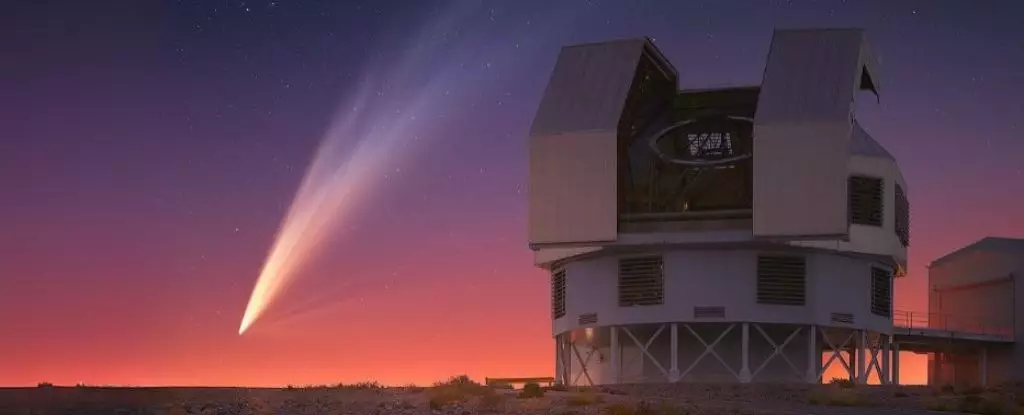Comets have long fascinated observers with their unpredictable trajectories and breathtaking appearances in the skies. They serve as an insight into the primordial conditions of our solar system. Among these celestial wanderers, Comet C/2024 G3 ATLAS recently captured attention with its promising characteristics and precarious perihelion passage. As this comet has made its presence known, it stands as a reminder of both the grandeur and unpredictability of comets in our cosmic neighborhood.
Comet G3 ATLAS was first identified on the night of April 25, 2024, by the Asteroid Terrestrial-impact Last Alert System (ATLAS) survey. This remarkable initiative is responsible for monitoring the skies for near-Earth objects and potential impact threats. Comet G3 ATLAS emerged from this diligent monitoring, presenting the possibility of a bright spectacle as it approached perihelion in early 2025. The anticipation surrounding new comet discoveries is palpable, often resulting from the historical context surrounding previous comets that varied in their display of spectacle or failure to meet expectations.
The perihelion passage of a comet, the closest point in its orbit to the Sun, is often fraught with uncertainty, and G3 ATLAS was no exception. Scheduled to reach perihelion on January 13, 2025, just 14 million kilometers from the Sun, observers held their collective breath. The experiences of previous comets, such as C/2012 S1 ISON, which disintegrated during its close solar encounter, and C/2011 W3 Lovejoy, which remarkably survived its close approach, were cautionary tales that reminded the astronomical community of the volatility surrounding a comet’s journey through the solar system.
The LASCO C3 imager aboard the Solar and Heliospheric Observatory (SOHO) documented the comet’s brightness surge near perihelion, marking its peak at an impressive magnitude of -3.8. This made G3 ATLAS the brightest comet in the skies since the legendary C/2007 P1 McNaught, a benchmark for cometary displays. However, despite its initial brightness, G3 ATLAS would soon be confronted with the quintessential challenges faced by comets as they navigate the fierce environment of the inner solar system.
Despite its promising emergence, G3 ATLAS showcased a conspicuous pattern of behavior often observed in bright comets. It made an appearance predominantly in the southern hemisphere, elusive for many northern observers. The comet’s dazzling features, including a refined dust tail, were primarily enjoyed by those located south of the celestial equator. This trend highlights an almost paradoxical affinity that many bright comets seem to have for southern skies, often leaving those in the northern hemisphere yearning for a glimpse.
Only a handful of skilled astrophotographers managed to capture the comet’s tail in the dusk sky. Notably, the peculiar behavior of the comet’s tail, being pushed by the solar wind and leading the nucleus, was yet another extraordinary element of this cosmic ballet. The tails of comets are integral to their identity, and the dust and ion tails of G3 ATLAS created a striking visual phenomenon, with syndynes illustrated on multiple frames.
As G3 ATLAS surpassed perihelion, observers noted a significant decline in brightness. Reports and images taken shortly after the working of perihelion revealed that the comet’s nucleus was beginning to exhibit signs of distress—transforming G3 ATLAS into a so-called “headless comet.” The fading activity of the nucleus, contrasted with a visually captivating tail, presented an intriguing phenomenon where light and motion seemed at odds in the cosmic narrative of the comet’s life cycle.
As of now, G3 ATLAS has regressed to a +5th magnitude, with continued expectations of fading in the constellation Piscis Austrinus. With its calculated trajectory suggesting a 160,000-year inbound orbit and a staggering estimated 600,000-year outbound pathway, G3 ATLAS has left a lasting mark on the pages of celestial history, potentially setting the stage for future interactions with the inner solar system.
The journey of Comet C/2024 G3 ATLAS underscores the beauty and unpredictability of celestial phenomena. As we track these visitors from the distant reaches of our solar system, we often find ourselves caught between hope and uncertainty. While the comet’s visibility and vitality waned over time, the narratives woven into the tapestry of its journey enrich our understanding of these cosmic travelers. As astrophotographers and enthusiasts share their experiences, we can all take solace in knowing that our celestial neighbors, even when fleeting, wield the power to inspire wonder and ignite a passion for exploration that transcends the vastness of space.


Leave a Reply